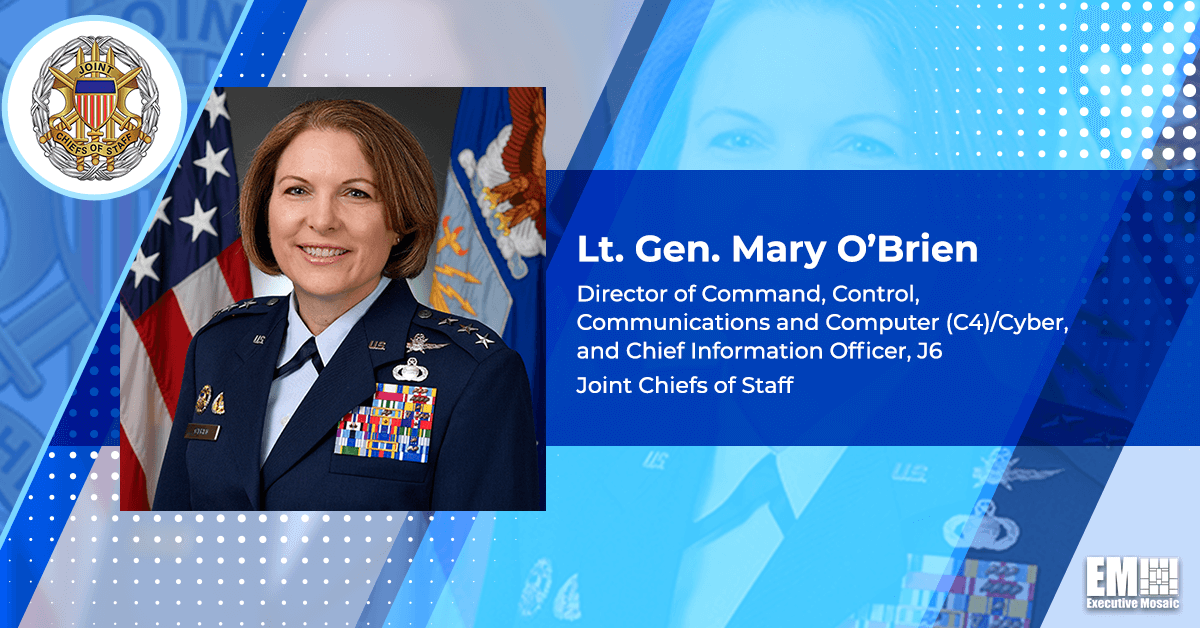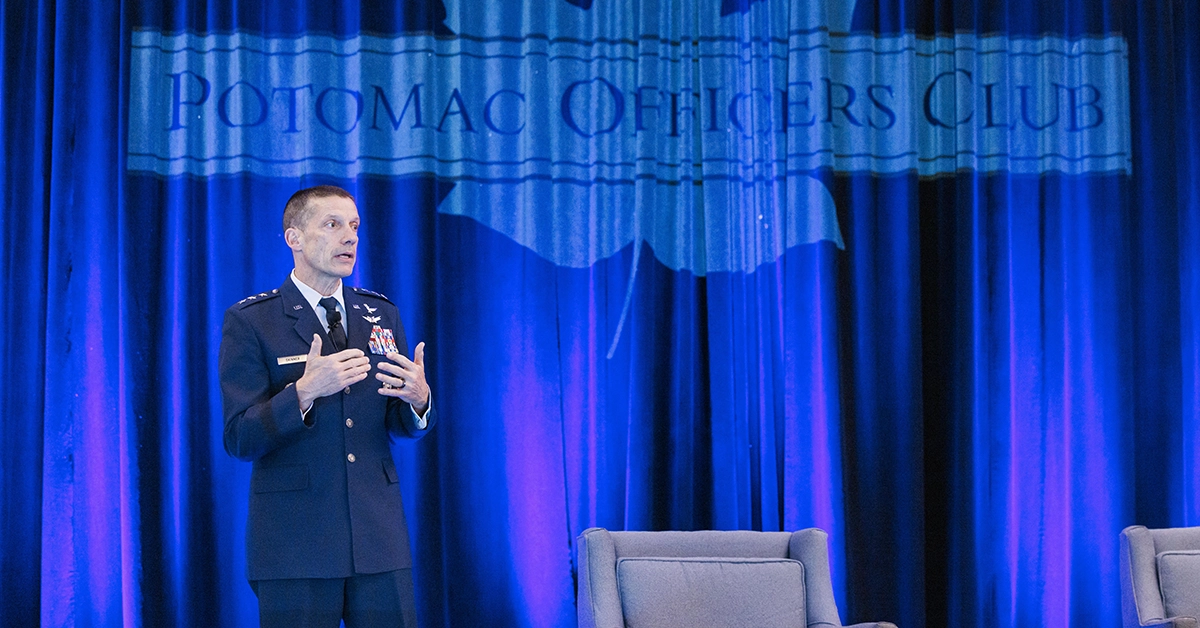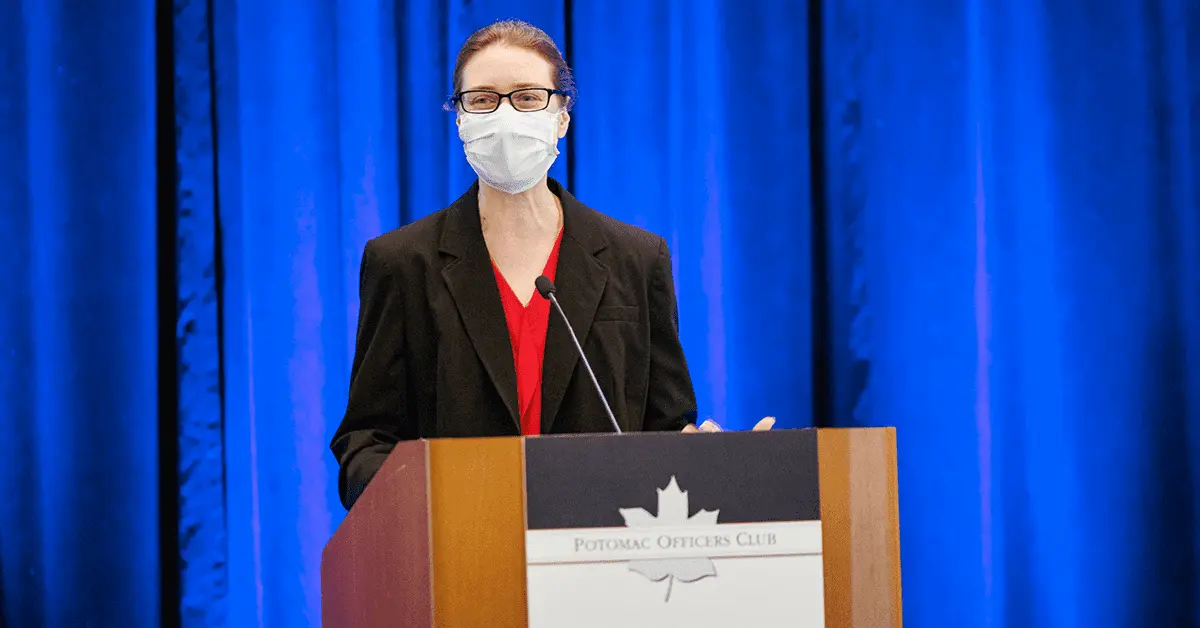According to Air Force Lt. Gen. Mary O’Brien, chief information officer at the Joint Chiefs of Staff, the speed at which technology is advancing and the extent of its potential impact on military operations have reached “unprecedented” levels.
Technology has repeatedly impacted the character of war, said O’Brien. In the past, tanks replaced horse-drawn cavalries, and earlier in O’Brien’s career, new technology capabilities made precision targeting possible during Desert Storm. Today, she said, emerging technologies will affect the full range of warfighting functions,  not just a “narrow slice.”
not just a “narrow slice.”
As the Department of Defense moves to adopt such impactful technologies, strong safety measures must be put in place. Military operations require high levels of accuracy not only to ensure mission success, but to prevent unnecessary damage, O’Brien emphasized during her keynote address Tuesday at the Potomac Officers Club’s 4th Annual CIO Summit.
“We need to have the right safeguards and the ability to validate, protect and secure our data,” she said.
O’Brien highlighted military targeting as one area where accurate data and well-trained technology is an absolute must.
“If I want to know if something is a valid military target, it has to be correct every time. These lethal effects that will be delivered are not reversible,” she stressed.
Sharing an example, O’Brien recalled a situation in which the Air Force tested two different softwares for automatic target recognition, one of which was determined to have lower confidence and one of which was seemingly very confident. Though the latter appeared to be accurate, she said that when put to the test, it was only correct around 50 percent of the time while the former was correct approximately 75 percent of the time.
“It turns out they were trained on data that was organized in different ways,” O’Brien said.
“It came back to the training data. The way you present the training data – even for the same type of system – matters. We have to really understand the technology we want to employ,” she elaborated.
Successful technology implementation not only relies on training software, but on ensuring that human operators understand the technologies they are using, O’Brien said. Initiatives such as Joint All-Domain Command and Control are shaped by the authority of a commander, and associated technologies must support the commander’s ability to guide the joint force, she said.
To ensure that the use of these tools properly supports the mission, workforce skill must “evolve at a faster pace than the technology.” Advocating for innovative capabilities and opportunities to develop the workforce is important to achieving a warfighting advantage, said O’Brien.
“We shouldn’t talk about the benefits of emerging technologies in their military application without consulting the next generation of professionals that will be trained to operate them and confront the complex technological problems of the future,” she said.
“We need to close the kill chain, but we will fail if we ignore these other tasks first, particularly with respect to the data and the information that underpins all of those other tasks in order to have and maintain that decision advantage,” she said.
Though JADC2 is a “warfighting function enabled by technology,” said O’Brien, it is not simply a single system or technology that will be purchased.
“It is about capabilities, people, processes, doctrine and strategy. It is about the rapid and targeted delivery of essential C4 solutions and training to the joint force,” she said.

In the modern era, the cyber domain has grown in prominence, presenting a host of new capabilities and new threats to the U.S. government. The Potomac Officers Club’s next summit, the 2023 Cyber Summit, will gather experts in the field to consider the implications of cyber in the federal space. To learn more and register to attend the event on June 8, please visit the Potomac Officers Club events page.







